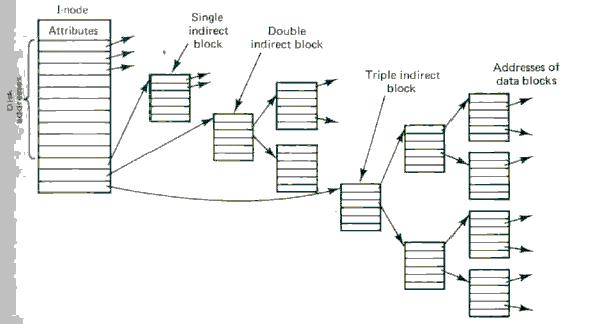
This course is run at the The University of Nottingham within the School of Computer Science & IT. The course is run by Graham Kendall (EMAIL : gxk@cs.nott.ac.uk)
The last filing system implementation we are going to consider is called an
i-node (for index-node). This is the scheme that
UNIX uses.
All the attributes for the file are stored in an i-node entry, which is loaded
into memory when the file is opened. The i-node also contains a number of direct
pointers to disc blocks. Typically there are twelve direct pointers.
In addition there are three additional, indirect pointers. These pointers point
to further data structures which eventually lead to a disc block address.
The first of these pointers is a single level of indirection, the next pointer
is a double indirect pointer and the third pointer is a triple indirect pointer.
Depending on the size of the disc (and the file), the triple indirect pointer may not be needed as all the blocks associated with the file can be accessed using the other pointers.
The structure of an i-node, and its associated entries, is shown below.
 |
| Last Page | Back to Main Index | Next Page |
Last Updated : 23/01/2002